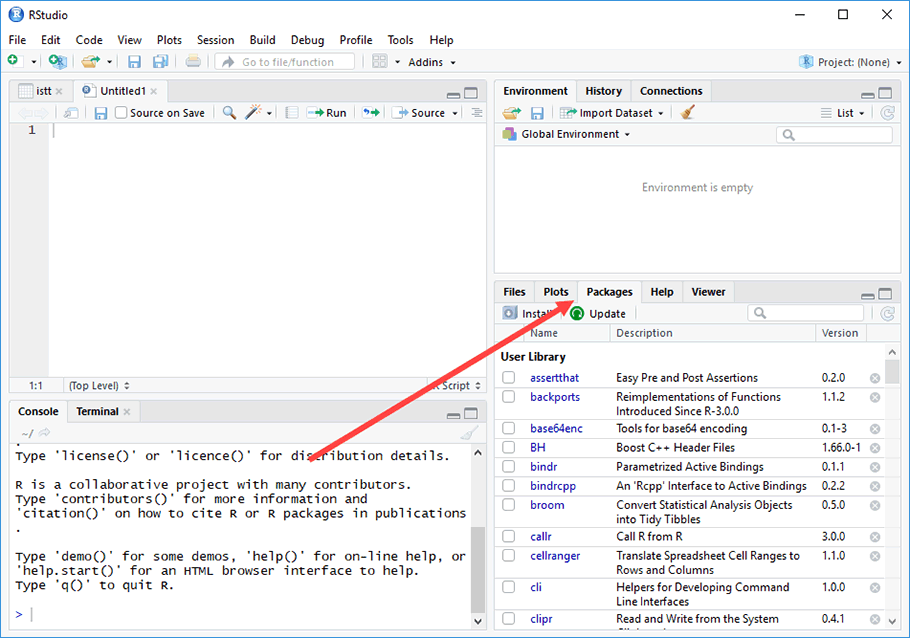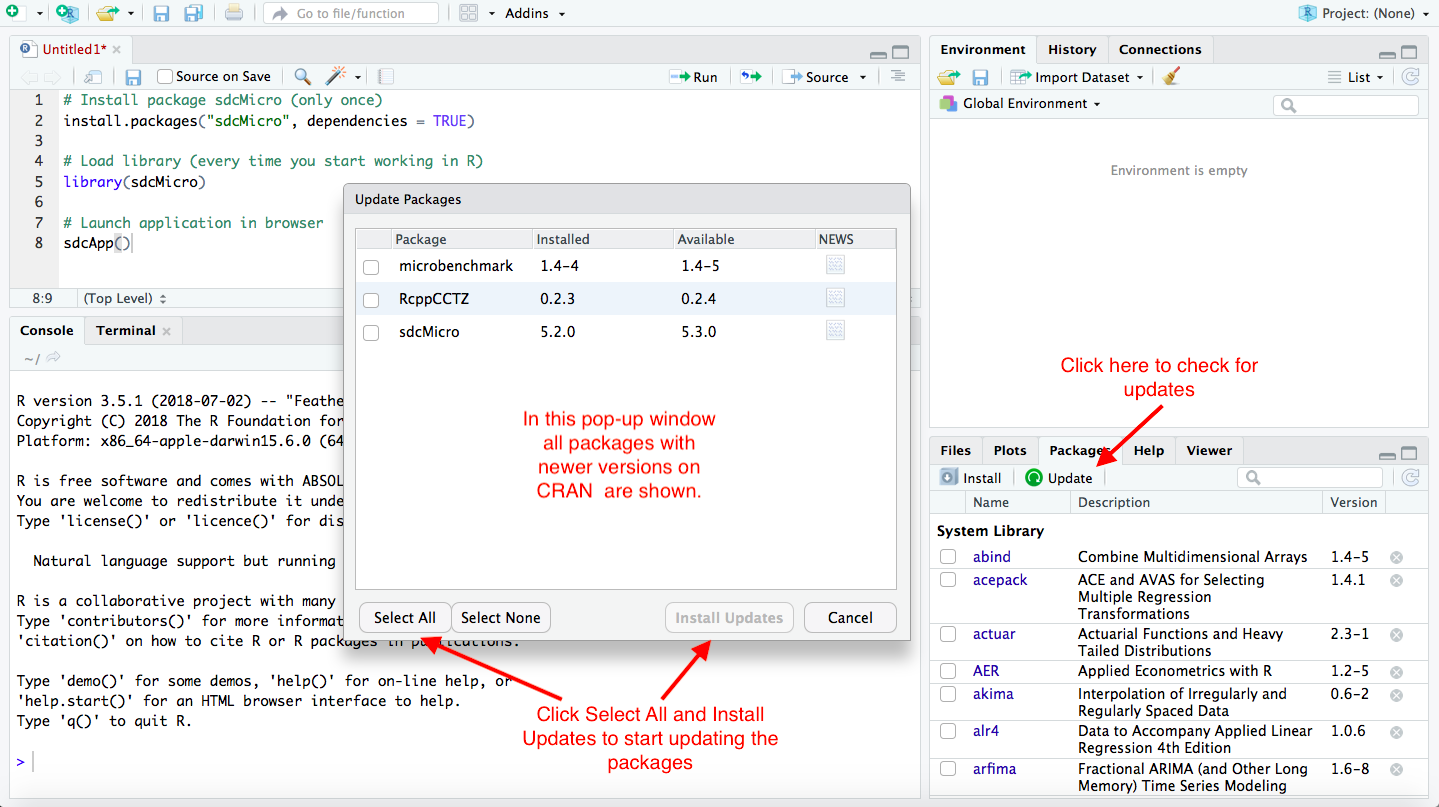

The following functions are key for package development. The roxygen2 package allows us to easily create documentation for the functions and data contained in the packages.

To create an R package, we can use the devtools and usethis packages which include a variety of tools aimed at package development.
binary: single compressed file optimized for a specific OS. source: directory with subdirectories as above. The contents of a package can be stored as Other common parts include subdirectories data, tests and vignettes. NAMESPACE file that specifies exported functions that can be accessed by the users and imported functions from other packages. DESCRIPTION file with metadata for the package such as the name, version number and author. Subdirectory man that contains the documentation. Subdirectory R that contains R files with functions. The minimal requirements for an R package are the following: R packages are directories with subdirectories containing R functions, data, documentation and other information. R packages can be shared for reuse by others in several ways.įor example, they can be contributed to the Comprehensive R Archive Network (CRAN), put in GitHub, or distributed privately using files shares. 
This free interactive course covers the basics of R.R packages provide a way to distribute R code, data and documentation. To create your own packages look at Writing R Extensions (the definitive guide), Leisch's Creating R Packages: A Tutorial, and Rossi's Making R packages Under Windows: A Tutorial. Use the library( package ) function within R to load it for use in the session.At the command prompt, install it using.Download the package of interest as a compressed file.Then use the library( package ) function to load it for use.
 Choose Install Packages from the Packages menu. (You need to do this once in each session, unless you customize your environment to automatically load it each time.) To use the package, invoke the library( package ) command to load it into the current session. Download and install a package (you only need to do this once). A complete list of contributed packages is available from CRAN. You can expand the types of analyses you do be adding other packages. Search() # see packages currently loaded Adding Packages Once installed, they have to be loaded into the session to be used. Others are available for download and installation. The directory where packages are stored is called the library. Packages are collections of R functions, data, and compiled code in a well-defined format.
Choose Install Packages from the Packages menu. (You need to do this once in each session, unless you customize your environment to automatically load it each time.) To use the package, invoke the library( package ) command to load it into the current session. Download and install a package (you only need to do this once). A complete list of contributed packages is available from CRAN. You can expand the types of analyses you do be adding other packages. Search() # see packages currently loaded Adding Packages Once installed, they have to be loaded into the session to be used. Others are available for download and installation. The directory where packages are stored is called the library. Packages are collections of R functions, data, and compiled code in a well-defined format.








 0 kommentar(er)
0 kommentar(er)
